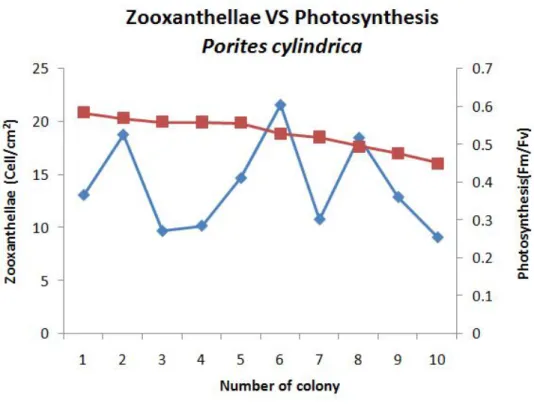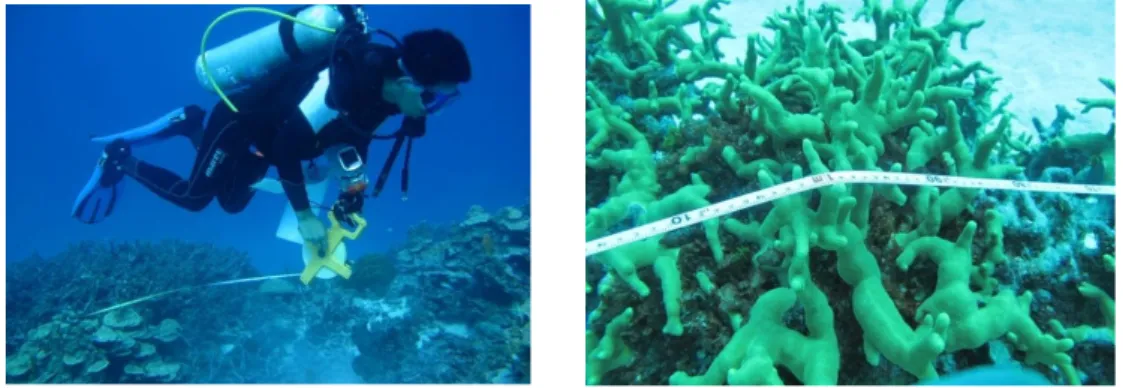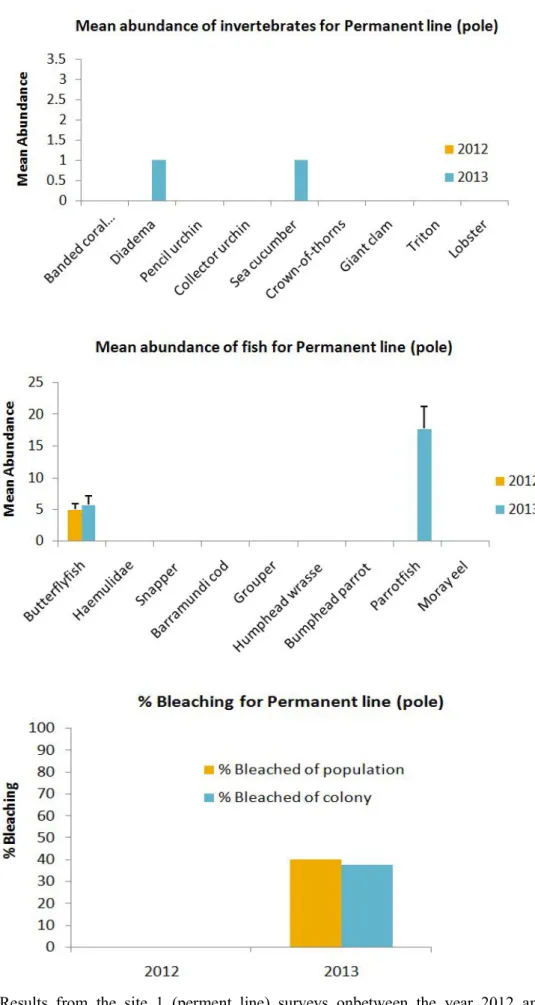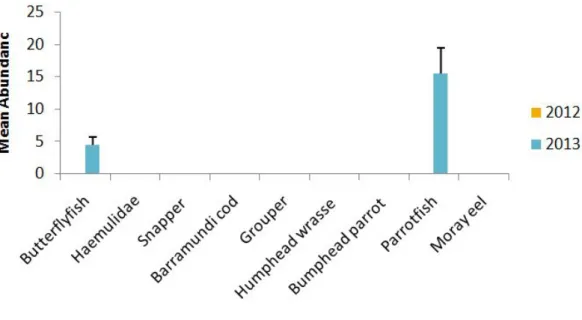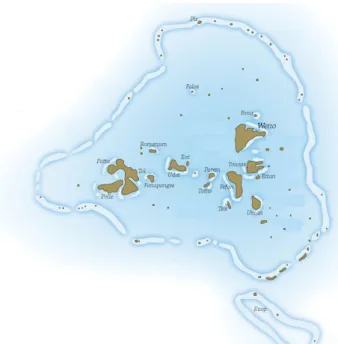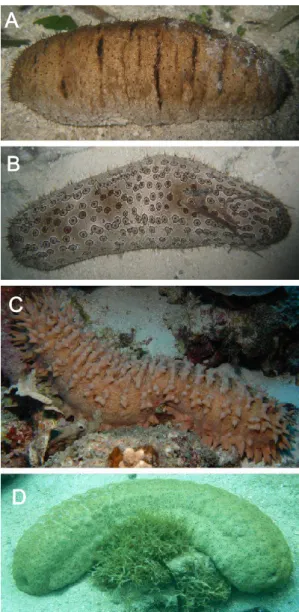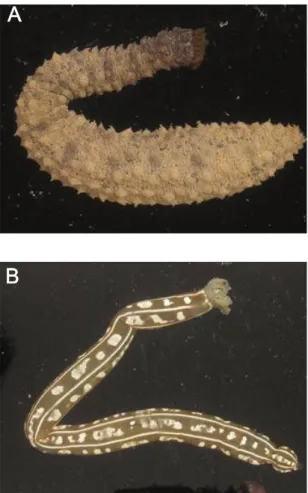BSPE99161-10422-3
열대 태평양기지 자원생물생산 및 기본연구활동 지원
Culture of Marine Living Resources and Supports on related
Basic Studies in Pacific Research Base
BSPE99161-10422-3
열대 태평양기지 자원생물생산 및 기본연구활동 지원
Culture of Marine Living Resources and Supports on related
Basic Studies in Pacific Research Base
- I -
- II -
- III -
- IV -
- V -
- VI -
- VII - μ
- VIII -
- IX -
- X -
ω ω
ω ω ω
- XI -
- XII -
- XIII -
- XIV -
μ
- XV -
- XVI - μ
- XVII -
- XVIII -
μ
- XIX -
ω ω
- XX -
- XXI -
- XXII -
- XXIII - ,
- XXIV -
- XXV -
δ δ
- XXVI -
- XXVII -
- XXVIII -
- XXIX -
- XXX -
- XXXI -
- XXXII -
r
- XXXIII -
δ δ
- 1 -
- 2 -
- 3 -
- 4 -
- 5 -
- 6 -
- 7 -
- 8 -
- 9 -
- 10 -
- 11 -
- 12 -
- 13 - β α
- 14 -
- 15 -
1-1-1. .
1-1-1.
- 16 - 1-1-1.
1-1-1.
- 17 - 1-1-2.
1-1-2.
1-1-3.
1-1-3.
- 18 - 1-1-4.
1-1-4.
μ μ μ μ
μ μ
- 19 - 1-1-5.
1-1-5.
1-1-6. .
1-1-6. S
- 20 -
μ μ μ μ
μ μ
- 21 -
1-1-7. (DC-0∼4: ).
1-1-7.
1-1-8
1-1-8
- 22 -
1-1-9. (DC-0∼4: ).
1-1-9.
1-1-10.
1-1-10.
- 23 -
해역 N
해역 W
해역 E
- - - -
- 24 -
CHL SS
- - - -
N
해 역SS
CHL CHL
E SS
해 역- - - -
- 25 - - -
- -
- - - -
- 26 - - -
- -
- 27 - - -
- -
- - - -
- 28 - - -
- -
- - - -
- 29 - - -
- -
- - - -
- 30 - - -
- -
BL24 (Halimeda, Turf Algae) BL26 (잘피) BG31 (덩어리산호 경산호, )
BG35 (Turf algae) BR24 (Rubble)
- - - -
- 31 - - -
- -
- 32 - - -
- -
- 33 - - -
- -
- -
- -
- - - -
- 34 - - -
- -
구 분 No. 항 목 공간범
위 비 고
기본도
1 연방국 도서섬 해안선 FSM
2 축환초도 Chuuk
3 웨노섬 정밀해안선 Weno 면적산출
4 등고선도 Weno 등고수치 산출
5 도로도 Weno 포장 비포장 선악로 등반로, , , 종류별 총연장 산출,
6 건물도 Sapuk 사북지역의 건물용도별 구분
7 수심도 Weno IDW분석레이어
8 연안 공간관리구획도 Weno
9 수계도 Weno
10 호소도 Weno 북측 기수역 호안지대
11 자연해안선 Weno
12 인공해안선 Weno
13 고해상도 위성컬러영상 Weno 천문연 입수자료 활용 미 입수( )
분석도
14 고해상도 위성흑백영상 Weno KOMPSAT2 흑백영상 15 주 공간구획도 Weno 1km x 1km
16 부 간구획도 Weno 0.5km x 0.5km
17 음영기복도 Weno
18 향분석도 Weno
19 경사분포도 Weno
20 3차원 지형도(DEM) Weno
특성도
21 해양생태서식지도 Sapuk 22 빵나무 서식분포도 Sapuk 23 거주자 인구 분포도( ) Sapuk 24 상수관정 위치도 Sapuk 25 전신주 위치도 Sapuk
26 폐차분포도 Sapuk
27 웨노섬 주변 경관도 Weno 28 축환초대 CTD조사주제도 Chuuk 29 산호초 서식지 매핑지도 Sapuk 30 난파선 위치분포도 Chuuk
31 퇴적물채취 지점도 Weno 2011(19 ), 2012(22 )개 개 32 축 해역 수치해도 일부 Chuuk 사용여부 불투명
33 정선조사 위치도 Sapuk 사북해안 정선조사 정점 34 글로벌 산호서식지도 World 산호초서식면적 분포
외부 공개용 자료
( )
자료 35 기상정보분석자료 Weno 바람장미도 년간(1 )
- 35 - - -
- -
구분 주요내역
1. 아틀라스 성격규정 과학적 성향의 역사 환경자료,
구성목차 2.
인문사회역사소개 주요연구활동 향후계획 시나리오 스토리 텔링 작성
3. ( ) 태평양 연구팀에서 초안작성(GIS부문 제외) 데이터 담당
4. 오정희 김윤칠 이수환, ,
초안작성 안
5. ( ) 80p(양면 스프링 외주)-
외주전 초안구성 취합구성( ) : 데이터센터 번역 및 그래픽 작업
6. 태평양 연구센터 최종 감수 포함( )
- - - -
구 분 분량(pages
) 주요내용
도입부1 5pp 인문사회 역사 지리정보, , (GIS콘텐츠)
마이크로네시아 축 역사 및 인문사회관련 소개~
도입부2 10 pp
연혁
KSORC (History)
기본연혁에 따른 주요 핵심 이벤트 정리 및 사진과 함 께
구성
본론부 40~50 pp
주요연구분야별 간략한 설명 연구실적( , 그래프, 표 활 용)
분야1, 분야2, 분야3 ...분야 까지 장르별로 구분하여n 작성 그림!( , GIS콘텐츠 활용)
맺음부 1~2 pp 향후 연구 협력 계획( ~ )
이미지메이킹적 도표나 글 그림으로 구성,
기타 1~2 pp 홍보성 페이지나 기타 필요한 용도가 있을 경우 구성
- 36 - - -
- -
- 37 - - -
Fig. - -
- 38 - - -
- -
α β
- 39 -
- 40 - - -
- -
Name Sequence (5‘ 3’)→ Tanneal
(°C) References tufAf
(forward) TGAAACAGAAMAWCGTCATTATGC
52 Fama et al. 2002 tufAr
(reverse) CCTTCNCGAATMGCRAAWCGC
- 41 - - -3
- -3
- 42 - - -4
- -4
- 43 - - -
- -
- 44 -
Peridinin
DM 1
DM 2
DM 3
DM 4
DM 5
DM 6
DM 7
SG 1
SG 2 0
20 40 60 80 100
Fucoxanthin
DM 1
DM 2
DM 3
DM 4
DM 5
DM 6
DM 7
SG 1
SG 2 0
200 400 600 800 1000 1200
19'-Hexanoyloxyfucoxanthin
DM 1
DM 2
DM 3
DM 4
DM 5
DM 6
DM 7
SG1 SG2
Concentrtaion (ng L-1) 0 10 20 30 40
Alloxanthin
DM 1
DM 2
DM 3
DM 4
DM 5
DM 6
DM 7
SG1 SG2 0
20 40 60 80 100 120 140
Zeaxanthin
DM1 DM2
DM3 DM4
DM5 DM6
DM7 SG1
SG2 0
50 100 150 200 250 300
Chlorophyll b
DM1 DM2
DM3 DM4
DM5 DM6
DM7 SG1
SG2 0
200 400 600 800 1000
DV Chl a
DM1 DM2
DM3 DM4
DM5 DM6
DM7 SG1
SG2 0
20 40 60 80
N.D.
- - - -
- 45 - - -
- -
- 46 - - -
- -
Sampling site Sample name tufA phylogeny Morphology Seagrass area
(SG1, SG2)
H1 H. cylindracea H. cylindracea
H2 H. macroloba H. macroloba
H3 H. macroloba H. macroloba
H4 H. macroloba H. macroloba
H5 H. cylindracea H. cylindracea
H6 H. cylindracea H. cylindracea
H7 H. cylindracea H. cylindracea
H8 H. cylindracea H. cylindracea
H9 H. cylindracea H. cylindracea
H10 H. cylindracea H. cylindracea
H11 H. borneensis H. borneensis
H12 H. macroloba H. macroloba
H13 H. opuntia H. opuntia
Rocky area H2-2 H. gigas H. gigas
(CS) H3-2 H. distorta H. distorta
H4-2 H. lacunalis H. magnidisca
H5-2 H. sp. H. distorta
H6-2 H. cylindracea H. cylindracea Coral and sand
area
H1-1 H. discoidea H. discoidea
H2-1 H. melanesica H. melanesica
H3-1 H. macrophysa H. macrophysa
- 47 - - -
- -
- - - -
- 48 - - -
- -
- - - -
- 49 - - -
- -
μ μ
μ
μ
μ μ
μ
Length (cm)
20 40 60 80
Max ETR (umol electrons m-2 s-1)
0 10 20 30 40 50 60 70
- 50 -
μ μ
μ μ
Length (cm)
0 20 40 60 80 100
Max ETR (umol electrons m-2 s-1)
20 40 60 80 100 120
After Before
- - - -
- 51 -
μ μ
μ
μ
μ μ
μ μ
μ
μ
μ
- - - -
- 52 - - -
- -
- 53 -
×
- 54 - - -
- -
Class Amount of substratum covered
% substratum covered
Mid point % (M)
5 1/2 to all 50 - 100 75
4 1/4 to 1/2 25 - 50 37.5
3 1/8 to 1/4 12.5 - 25 18.75
2 1/16 to 1/8 6.25 - 12.5 9.38
1 less than 1/16 < 6.25 3.13
0 about 0 0
∑
∑
- 55 - - -
- -
Group Benthic Habitat Code Taxon Life form
Abiotic
Sand S
Rubble R
Dead Coral DC
Rock R
Coral Hard Coral HC
Acropora
Bottlebrush Branching Digitate Tabulate Encrusting Submassive
Non Acropora
Branching Encrusting Foliaceous Massive Submassive Mushroom Solitary Soft Coral SC Soft Coral
Algae
Macro Algae MA
Brown Macro Algae Red Macro Algae Green Macro Algae Coralline Algae CA
Turf Algae TA
Halimeda HA
Seagrass Seagrass SG Seagrass
Other Macro Fauna MF
Sponge Fire Coral Blue Coral Tunicates Echinodermata
- 56 - Arthropoda Mollusca Zoanthids Indeterminate Water W
Indeterminate IN
- 57 - - -
- -
- - - -
- 58 - - -
- -
- - - -
- 59 - - -
- -
돌산호 종명 분포 사진
Acropora nobilis
리프 언덕에 대형 군락 형성 - KSORC
리프 안쪽에 패치 형성 - Benedict
웨노섬 연안 주요 우점종 -
전체 돌산호 대비
- 62.2%
Porites rus
리프 경사면에 우점 - Benedict
웨노섬 연안 리프 경사면에 분포 -
웨노섬 연안 주요 우점종 -
전체 돌산호 대비
- 19.9%
Porites cylindrica
리프 경사면에 우점 - Benedict
리프 리프 안쪽 패치 형성 - Benedict
웨노섬 연안 주요 우점종 -
전체 돌산호 대비
- 9.0%
Pavona danai - Benedict 리프 안쪽에 분포 전체 돌산호 대비
- 2.4%
Pocillopora damicornis
리프 안쪽에 분포 - KSORC
전체 돌산호 대비
- 2.2%
- 60 - - -
- -
- 61 - - -
- -
잘피 종명 분포 사진
Cymodocea rotundata
연안에 밀집하여 분포하는 우점종 -
- Syringodium isoetifolium와 혼재하 여 분포
얕은 모래 바닥 수심
- 0-5 m
Syringodium isoetifolium
연안에 밀집하여 분포하는 우점종 -
- Cymodocea rotundata와 혼재하여 분포
내만 얕은 모래 바닥 수심
- 0-3 m
Enhalus acoroides
연안에 부분적으로 를 형성하
- patch
여 분포
모래 또는 펄 바닥 수심
- 0-3 m
Thalassia hemprichii
연안에서 떨어진 가장자리에 부분적 -
분포
모래 펄 또는 산호파편 바닥
- , 0-3
수심 m
Cymodocea serrulata
연안에서 떨어진 모래 지역에 부분 -
적 분포
모래 바닥 에 분포
- 0-3 m
- - - -
- 62 -
- 63 - - -
-3-1
- 64 - - -
-3-2
- 65 -
0.0 0.2 0.4 0.6 0.8 1.0 1.2 1.4 1.6
A S O N D J F M A M J J
Months
GSI
0 100 200 300 400 500 600 700
Rainfall
0 1 2 3 4 5 6
A S O N D J F M A M J J
Months
GSI
0 100 200 300 400 500 600 700
Rainfall
2009 2010
- - -3-
- 66 -
0 20 40 60 80 100
A S O N D J F M A M J J
Month
Percentage
Resting Spawning Developing Immature
2009 2010
n= 12 11 9 8 7 7 11 12 13 8 8
0 20 40 60 80 100
A S O N D J F M A M J J
Month
Percentage Resting
Spawning Developing Immature
2009 2010
n= 8 7 9 12 13 13 9 8 10 9 12
- -4 -3-
- 67 -
μ μ μ
μ μ μ
μ μ μ μ
μ μ μ
μ
- 68 -
- 69 - - -
-4-
- - -4-
- 70 -
μ μ
μ μ μ μ
μ μ μ μ
μ μ
μ μ
β β
β α
α β β α α
α α α β
β α α α
- 71 -
β β
- - - -
- 72 - - -
- -
- 73 -
˚ ˝ ˚ ˝
-5- -5-
- 74 - -5-
-5-
- 75 - -5-1
-5-
Medium Components
Urea used as nitrogen source NaNO3 used as nitrogen source
A1 A2 A3 B1 B3 C1 C2 C3 R1 R2 R3
NaHCO3 5.00 7.50 10.00 5.00 10.00 5.00 7.50 10.00 9.00 16.80 13.61
Na2CO3 1.00 1.00 1.00 1.00 1.00 1.00 1.00 1.00 4.03 - 4.03
NaNO3 - - - - - - - - 2.50 2.50 2.50
Urea 2.00 2.00 2.00 4.00 4.00 6.00 6.00 6.00 - - -
NaCl 1.00 1.00 1.00 1.00 1.00 1.00 1.00 1.00 1.00 1.00 1.50
K2HPO4 1.00 1.00 1.00 1.00 1.00 1.00 1.00 1.00 0.50 0.50 0.50
K2SO4 1.00 1.00 1.00 1.00 1.00 1.00 1.00 1.00 1.00 1.00 1.00
MgSO4·7H2O 0.20 0.20 0.20 0.20 0.20 0.20 0.20 0.20 0.20 0.20 0.20
FeSO4·7H2O 0.01 0.01 0.01 0.01 0.01 0.01 0.01 0.01 0.01 0.01 0.01
CaCl2·2H2O 0.04 0.04 0.04 0.04 0.04 0.04 0.04 0.04 0.04 0.04 0.04
Na2EDTA 0.08 0.08 0.08 0.08 0.08 0.08 0.08 0.08 0.08 0.08 0.08
Vitamin B12 - - - - - - - - - - 0.00015
A5 Solution(ml) - - - - - - - - - 1.00
Metal solution(ml) 6.00
Micronutrient solution(ml) 1.00
Soil extract 2.00 2.00 2.00 2.00 2.00 2.00 2.00 2.00 2.00 -
Added medium components unit : g L-1 R1: Control group in this study
R2: Raoof et al (2006) / Zarrouk's medium, 2.5 L erlenmayer flask, 30°C, 12L:12D, 18 days growth duration
R3: Celekli and Yavuzatmaca (2009) / Modified Zarrouk's medium (Schlösser. 1982), 250 ml erlenmayer flask, 30°C, 10 days growth duration
- 76 - -5-
-5-
- 77 - -5-2
-5-
Light
intensity 0 2 4 6 8 10 12 14 (day)
9:00 am 2260.5 2310.0 478.5 2491.5 2491.5 2112.0 2062.5 1897.5
1:00 pm 2491.5 2970.0 429.0 3300.0 3300.0 2491.5 1584.0 1617.0
5:00 pm 346.5 330.0 181.5 379.5 429.0 297.0 643.5 660.0
R1 A1 A2 A3 B1 B2 B3 C1 C2 C3
Temperature 29.26±0.83 29.47±0.83 29.38±0.82 29.28±0.79 29.26±0.81 29.32±0.83 29.22±0.83 29.33±0.80 29.35±0.83 29.22±0.88 Salinity 8.46±0.54 3.85±0.26 4.43±0.24 4.26±0.38 4.97±0.21 4.92±0.24 4.08±0.33 5.76±0.27 6.28±0.42 3.97±0.18
pH 8.14±0.23 8.18±0.35 8.14±0.36 8.07±0.32 8.17±0.30 7.94±0.27 8.12±0.31 8.19±0.30 8.14±0.29 8.08±0.31
*Light intensity unit : µmol photons m-2s-1 day-1, water temperature unit : °C, salinity unit : psu
- 78 - -5-3
-5-
-5-4 -5-
μ
Factors
Experimental groups
R1 A1 A2 A3 B1 B3 C1 C2 C3
µmax(day-1)* 0.49 0.47 0.50 0.47 0.48 0.49 0.48 0.48 0.49
Coil No. 8.55 9.45 8.55 7.75 10.30 7.55 9.60 7.80 11.95
Biomass (g L-1) 0.97 0.75 1.05 0.71 0.85 0.97 0.87 0.80 1.02
* µmax (day-1):Maximumspecificgrowthrateinaday
Protein Lipid Carbohydrate Ash Moisture
Major
nutrients 56.14 0.75 16.21 20.98 4.92
Asp Thre Ser Glu Pro Gly Ala Cys Vale Mete Iso Leu Tyr Phee Lyse Hise Arg Amino acids 10.40 5.92 4.79 14.90 4.51 5.07 7.61 0.56 6.76 3.10 6.76 0.85 0.56 6.76 7.04 2.54 10.40
* e:Essentialaminoacids
- 79 - -5-
-5-
- 80 -
- 81 - -5-5
-5-
Urea (g L-1) Culture period (day) Biomass (g L-1) Culture scale References
0.03 18 0.683
Laboratory Avila-Leon et al. (2012)
0.30 18 1.415
2.50 14 1.591
Laboratory Danesi et al. (2002)
5.60 14 1.490
0.60 28 0.910
Laboratory Costa et al. (2001)
1.80 28 0.091
3.00 28 0.059
2.00 14 1.050
Outdoor
A2
4.00 14 0.970 B3 (In this study)
6.00 14 1.020 C3
NaNO3 (g L-1) Culture period (day) Biomass (g L-1) Culture scale References
2.5 18 1.630 Laboratory R2, Raoof et al. (2006)
2.5 10 3.495 Laboratory R3, Celekli and Yavuzatmaca (2009)
- 82 - -1-1
-1-
μ
μ μ
μ μ
- 83 -
μ
Primer(rbcL) Sequence
Forward 5'-AAATTGACTTATTATACTCCT-3' Reverse 5'-AAAGTTCCTCCACCGAATTGTAG-3' -1-1
-1-
- 84 - -1-2
-1-
-1-3 -1-3
- 85 - -1-4
-1-
-1-5 -1-
- 86 - -1-6
-1-6
-1-7 -1-
-1- -1-
- 87 - -1-9
-1-9
μ μ
μ
- 88 - -1-10
-1-10
μ
-1- -1-
- 89 - -1-
-1-
species primers
1 Acanthamoeba polyphaga mimivirus TGGCTTTGACAAAAACGTCG GCAATGGAAAATGCTCATGG 2 Ambystoma tigrinum virus GAAAACACCGGACGTGAGTG GTTGTCCACAAAGCACAGGG 3 Amsactamooreientomopoxvirus AATCATCCAATAATTCGTCTACAA GGTTGTGGTCATGGTAAAATAACA 4 Bovine herpesvirus 5 CTACACCCGTGCACTTCGTT GGCATCGGCAGTACAGTCAC
5 Bovine herpesvirus 5 TGCATGTACACGGGAACCA TCTACCGCATGTTCGAGGTG
6 Canarypox virus CGGCGATCAATAACTCTTGG ATGCATGTAGGAACCGACGA
7 Macacine herpesvirus 1 GCTGCTCTCCCGCTACTTCT CTGTCGTCCTCGTCCTCGT 8 Cercopithecine herpesvirus 2 ATCTCATTCAAAGCGTTGCG GTTTCTTCTGGGCTTCGGTC 9 Ectocarpus siliculosus virus 1 CATCTCCCCCAACCCTTCTA CATGCATGGGAAACTTGGAG 10 Equid herpesvirus 2 GTGGTACCCGCCCTGTATCT GCCATAATGAGCAGAGGCAA
11 Human herpesvirus 1 AGTCCCAGGTAACCTCCACG GAGGCCCAGACCACCAGG
12 Human herpesvirus 2 TGTCTGTTTGGGCTTGTCGT CACGTTGACGTGGTGTTGG
13 Melanoplus sanguinipes
entomopoxvirus CCAATAATATCCATACCAATAACAA TTTCTGAATGTGTGTTACCTATTTCAA
14 Nosemaceranae TAAGAGGAGCAAATGGCACG GACGCTTCGTAAGACGTTCAA
15 Shrimp white spot syndrome virus AAGGAGATGGGGTTCGTGTC CGTGTGGAGGGGTAACTCGT 16 Singapore grouper iridovirus GTGAGAAACGCGCATCTGTT TCCTCGGATTTGTTGTTGGA
17 Suid herpesvirus 1 ATGCCTCCACAACGAGCC GCAGGATCAGAAACACGAGG
18 Tupaiid herpesvirus 1 AGCGCGGCTACTGGTTTAAG GTCCTCTCCCACTTCTTCGG
- 90 - -1-
-1-
μ μ
μ
μ
- 91 - -1-
-1-
- 92 - -1-
-1-
-1- -1-
- 93 -
μ
-1- -1-
r.
-1- -1-
- 94 - -1-
-1-
-1- -1-
- 95 - -1-3.
-1-3
-1- -1-
- 96 - - -
- -
ω ω
ω
ω
- 97 - ω
ω ω
ω ω
- - - -
ω ω
ω ω
ω ω
ω
- 98 - - -
- -
δ δ
δ δ
δ δ
δ δ
δ δ
δ δ
δ δ
δ
- 99 -
- - δ δ
- - δ δ
- 100 -
구 분 %
성취도 판단 특기사항
우수성 또는 부진사유 등
( )
정상 부진
당해연도 목표달성도 (93) • 현지 냉동 시료 국내 반입 지연(7월-11월) 최종목표 대비 달성도 (80) •
성과목표 가중치( ) 2013년 연구성과 연차목표 달성도
최종목표 달성도 산업소재생물생산
1.
(30%)
바이오디젤 추출용 미세조류 생산(0.5
• ton)
열대 기능성 어류 생산체계구축
•
100 90
생물다양성정보 및 2.
시료확보 (30%)
열대 해양 생물 반입(400 )점
•
초호 서식처 구조 민 변동 감시
• 70 70
생태계 장기 3.
감시기술(20%)
라군내부 물리 화학적 변동 감시
•
망그로브 구성 및 먹이망감시
• 100 80
계량 지표
4. (20%) • 논문 생산 홍보자료 발간
• 100 80
합계(100%) (93)% (80)%
- 101 -
- 102 -
- 103 -
위탁연구과제 개요
○
- 104 -
Report of the activities conducted
at Korea South Pacific Ocean Research Center (KSORC)
By
Dr. Suchana Apple Chavanich Dr. Voranop Viyakarn
Mr. Pataporn Kuanui Mr. Narainrit Chinfak
September 11-21, 2013
Reef Biology Research Group Department of Marine Science
Faculty of Science Chulalongkorn University
Bangkok, Thailand
- 105 -
Summary
During September 11-21, 2013, several activities including field surveys and experiments were conducted by a team from Reef Biology Research Group, ChulalongkornUniversity. The objectives of the study were 1) to conduct research on coral biology (growth, photosynthesis, and zooxanthellae of corals) in Chuuk, 2) to follow up the reef monitoring areas where permanent lines and quadrats have been established since last year, 3) to do experiments on coral restoration technique using both sexual and asexual techniques, and 4) to investigate the species diversity of soft corals, SinulariaandSarcophytoninChuuk. All activities were completed and the details of the results were shown in the next section of the report.
For the photosynthesis rate and density of zooxanthellae of corals, the results showed that densities of zooxanthellae varied depending on coral species. In addition, there was no correlation between density of zooxanthellae and photosynthesis rates of each coral species. During the reef monitoring surveys, it is interesting to note that coral bleaching particular on the reef in front of KSORC and high density of Drupellaspwereobserved. More than 35% of coral population experienced the bleaching. However, overall from the field surveys, coral coverage in 3 sites ranged between 15-39 % of the total substrates.
For the experiments on coral restoration technique, small coral fragments attached to the PCV were transplanted into the ocean. The growth and survival of corals will be monitored throughout the year.
Finally, we would like to thank all staff at KSORC for their kindness and generous assistance both in the field and in the laboratory to make our activities possible. This project was funded by a grant from KIOST to ChulalongkornUniversity. We also would like to special thank to Dr.
Heung Sik Park for allowing us to come to KSORC and for providing all logistic arrangement to make our project possible.
- 106 - Objectives
Activities
The activities can be divided into 4 parts:
I Photosynthesis rate and density of zooxanthellae of corals
II Monitoring reefs using Reef Check method and permanent line transects
III Experiment on coral restoration technique using both sexual and asexual reproduction IV Species diversity of soft corals
- 107 - I Photosynthesis rate and density zooxanthellae of corals
Methods
Corals (
■ Pocillopora damicornis, Acropora nubilis,Porite cylindrica) were collected to measure the photosynthesis rate by using the diving PAM and the density of Zooxanthellae.
At least 10 coral fragments in each species were collected.
■
Setting the PAM equipment and measuring photosynthesis rates of corals
Extracting coral tissues using high pressure water
Counting numbers of zooxanthellae in each coral species
- 108 - Results
The results showed that densities of zooxanthellae varied depending on coral species. However, there was no correlation between density of zooxanthellae and photosynthesis rates of each coral species.
- 109 -
Fig 1. Densities of zooxanthellae depending on coral species.
II Monitoring reefs using Reef Check method and permanent line transects
Surveys of reef health including coral cover, invertebrates, and fish along the permanent
■
line transects were conducted at 3 permanent study sites.
These permanent sites were established last year (2012), and were chosen based on Mr.
■
Taihun Lee’s previous study.
Reef Check method was used to monitor the reef health.
■
The details of 3 permanent sites were below:
Site 1 Permanent line (pole) (GPS N 7.45501 E 151.896702)
Site TL2 (GPS N 7.457040 E 151.906819) Site TL3 (GPS N 7.45183 E 151.905586)
- 110 -
Fig 2. During the surveys, coral bleaching was also observed.
Results
The results from the field surveys were shown below. In addition, the data were compared between the year 2012 and 2013.
Site 1: Permanent line (pole) (GPS N 7.45501 E 151.896702) Reef in front of KSORC
Percent cover of substrate: Hard coral = 39.38±3.68%, Algae = 23.38±3.61%, Rubber= 16.25±2.72 and Sand = 12.50±2.16%
HC = Hard coral SC = Soft coral RKC = Recently Killed coral NIA = Nutrient indicator algae SP = Sponge RC = Rock
RB = Rubble SD = Sand SI = Silt/Clay
OT = Other
- 111 -
Fig. 3. Results from the site 1 (perment line) surveys onbetween the year 2012 and 2013.
- 112 - Site 2: Site TL2 (GPS N 7.457040 E 151.906819) Benedict’s point
- 113 -
Fig. 4. Results from the site 2 (Benedict's point) surveys onbetween the year 2012 and 2013.
Site 3: Site TL3 (GPS N 7.45183 E 151.905586) Benedict’s point
- 114 -
Fig. 5. Results from the site 3 (Benedict's point) surveys onbetween the year 2012 and 2013.
- 115 - Important Notes
During the field surveys, we observed coral bleaching particular in the reef in front of KSORC and high density of Drupellasp. More than 35% of coral population experienced the bleaching.
Coral bleaching Drupella sp.
III Experiments on coral restoration technique using both sexual and asexual reproduction
Methods
Small coral fragments were collected and attached on to the substrates (PVC). Then, they
■
were transplanted into the ocean. The growth and survival of corals will be monitored throughout the year. In addition, the attachment time by corals themselves will also be investigated.
In addition, small coral fragments were collected to observe the development of coral
■
gametes.
Three coral species (
■ Porites cylindrical, Acropora nubilis, Pocillopora damicornis) were chosen for the experiments.
- 116 -
Preparing PVC pipe bases
Prepare coral fragments
Transfer coral fragments to the coral nursery
- 117 -
Measuring coral fragments
Weighting coral fragments
- 118 - Results
Results of measuring of coral fragments at the beginning of the experiment were shown below.
In addition, the measuring of coral growth is planned to be continued monthly.
Coral fragments (ramets) on the pipe caps
NO. Species
Height (cm) 15-09-13
Measure to be continued monthly
1 Porites cylindrica 2.3
2 Porites cylindrica 2.5
3 Porites cylindrica 2.5
4 Porites cylindrica 2.5
5 Porites cylindrica 1.6
6 Porites cylindrica 2.5
7 Porites cylindrica 1.6
8 Porites cylindrica 2.0
9 Porites cylindrica 2.0
10 Porites cylindrica 3.0
11 Acropora nubilis 1.6
12 Acropora nubilis 2.8
13 Acropora nubilis 3.4
14 Acropora nubilis 2.6
15 Acropora nubilis 2.3
16 Acropora nubilis 2.0
17 Acropora nubilis 1.5
18 Acropora nubilis 2.3
19 Acropora nubilis 2.0
20 Acropora nubilis 1.5
21 Pocillopora damicornis 1.5
22 Pocillopora damicornis 3.0
23 Pocillopora damicornis 2.5
24 Pocillopora damicornis 2.1
25 Pocillopora damicornis 1.6
26 Pocillopora damicornis 1.3
27 Pocillopora damicornis 0.9
28 Pocillopora damicornis 1.9
29 Pocillopora damicornis 1.0
30 Pocillopora damicornis 1.5
- 119 - Coral fragments in the pipes (Acroporanubilis)
NO. Species
Height (cm) 15-09-13
Measure to be continued monthly
1 Acropora nubilis 11.9
2 Acropora nubilis 4.6
3 Acropora nubilis 5.7
4 Acropora nubilis 5.9
5 Acropora nubilis 11.8
6 Acropora nubilis 5.0
7 Acropora nubilis 6.3
8 Acropora nubilis 4.3
9 Acropora nubilis 6.1
10 Acropora nubilis 6.2
Coral fragments on the cotta tiles
No Species 15-09-13
Measure to be continued monthly
Wet weight
(g)
Length (cm)
Wet weight (g)
Length (cm) A1 Acropora nubilis 112.33 2.5
A2 Acropora nubilis 133.62 3.0 A3 Acropora nubilis 107.97 4.5 A4 Acropora nubilis 99.34 3.5 A5 Acropora nubilis 101.94 3.5 A6 Acropora nubilis 121.28 2.7
P1 Porites sp. 127.77 3.5*3.0
P2 Porites sp. 95.24 7.5*2.0
P3 Porites sp. 97.29 2.3*2.0
P4 Porites cylindrica 151.11 4.5
P5 Porites cylindrica 121.98 3.0
P6 Porites cylindrica 121.77 3.0
PA1 Montipora spumosa 108.73 2.1
PA2 Montipora spumosa 116.86 2.5
PA3 Montipora spumosa 110.95 2.8
PA4 Montipora spumosa 99.62 2.4
PA5 Montipora spumosa 110.17 3.5
PA6 Montipora spumosa 118.74 3.0
PA7 Montipora spumosa 130.20 4.0
PA8 Montipora spumosa 108.44 2.1
PA9 Montipora spumosa 109.69 2.7
- 120 - IV Species diversity of soft corals
Methods
Soft coral fragments were collected to investigate the diversity of soft corals in Chuuk.
■
Results
25 samples of soft corals were collected and identify to genus level. More identification
■
will be carried on to species level later.
Below is the preliminary information of soft coral diversity found in the surveys.
■
1. F. Alcyoniidae: (~4 genera) Sinularia(~15 sp.), Klyxum?? (~2 sp.), Sarcophyton(1sp.), Lobophytum(1sp.)
2. F. Nephtheidae: (~2 genera) Scleronephthya??(2-3sp.) or one is may be Dendronephthya ( 1 sp.), Lemnalia(1sp.)
3. F. Xeniidae: (1 genus) Anthelia??(1sp.)
- 121 -
Appendix 1. Identification of gene level from soft coral fragments
F. Alcyoniidae Sinularia sp.1 sample #01
F. Alcyonidae Sinularia sp.2 sample #02
F. Alcyoniidae Sinularia sp.3 sample #05
F. Alcyoniidae Sinularia sp.4 sample #07
- 122 - Appendix 1. continued
F. Alcyoniidae Sinularia sp.5 sample #09
F. Alcyonidae Sinularia sp.6 sample #10
F. Alcyoniidae Sinularia sp.7 sample #11
F. Alcyoniidae Sinularia sp.8 sample #13
- 123 - Appendix 1. continued
F. Alcyoniidae Sinularia sp.9 sample #16
F. Alcyonidae Sinularia sp.10 sample #18
F. Alcyoniidae Sinularia sp.11 sample #19
- 124 - Appendix 1. continued
F. Alcyoniidae Sinularia sp.12 sample #21
F. Alcyonidae Sinularia sp.13 sample #22
F. Alcyoniidae Sinularia sp.14 sample #23
F. Alcyoniidae Sinularia ?? sp.15 sample #14
No preserved specimen
- 125 - Appendix 1. continued
F. Alcyoniidae Klyxum ??sp.1 sample #04
F. Alcyonidae Klyxum ??sp.1 sample #20
F. Alcyoniidae Sarcophyton sp.1 sample #08
F. Alcyoniidae Lobophytum sp.1 sample #15
- 126 - Appendix 1. continued
F. Nephtheidae ?? sample #06
F. Nephtheidae Scleronephthya??sp.1 sample #24
F. Nephtheidae Scleronephthya??sp.2 sample #25
- 127 - Appendix 1. continued
F. Nephtheidae Scleronephthya??sp.3/
Dendronephthya??sp.1 sample #12
F. Nephtheidae Lemnalia sp.1 sample #03
F. Xeniidae Anthelia?? sp.1 Sample#17
- 128 -
The Shallow-water Holothuroids of Chuuk, Federated States of Micronesia
Results of a Survey Performed 30 June to 9 June 2013
A Report Prepared for the Korea South Pacific Ocean Research Center, Korea Institute of Ocean Science and Technology
Submitted by
Alexander M. Kerr
1, Sun W. Kim
2and Allison K. Miller
11
The Marine Laboratory, University of Guam
2
Korea Institute of Ocean Science and Technology
December 2013
University of Guam Marine Laboratory Technical Report 155
- 129 -
ACKNOWLEDGEMENTS
We thank the late Hon. Alanso Cholymay, former Chief-at-large and Senator of Chuuk State, as well as Mr. Tesime Kofot, Director of the Department of Marine Resources, for their interest in, and efforts to conserve, the beche-de-mer resources of Chuuk. We especially thank the Korea Institute of Ocean Science and Technology (KIOST) and Korea South Pacific Ocean Research Center (KSORC), for facilitating our visit, indeed, for making this survey a reality. We also appreciate Dr. Heung-sik Park, Director of KSORC, for overseeing our dayto-day planning and logistics, and also the staff of KSORC for their assistance with navigation and collecting, especially outside the reef, at night, and in big swell and strong currents. This project was funded in part by a grant from KIOST to the University of Guam Marine Laboratory (PE 99161) and a U.S. National Science Foundation Assembling the Tree of Life grant to AMK (DEB 1036229).
Kinissow and 감사합니다.!
- 130 - EXECUTIVE SUMMARY
The islands of Chuuk in the Caroline Islands of central Micronesia possess a diverse array of echinoderms, including holothuroids (sea cucumbers). We were invited to perform a survey to assess the diversity of holothuroids in Chuuk's shallow-water marine environments. In six days of surveying between 30 June to 9 July 2013, we surveyed 11 sites around the islands and barrier coral reefs and found a minimum of 34 species of holothuroids, several of them new records for the island and for Micronesia. The commercially most valuable species were very rare, almost certainly because of overfishing. These species include Bohadschia vitiensis, Thelenota anax and Holothuria (Microthele) whitmaei. The most interesting finds included a potentially speciose assemblage of small apodan species from Synaptidae abundant in seagrass. Another unexpected find was an unusual species from the subgenus Metriatyla, H. (M.) albiventer, not known from elsewhere in Micronesia. Including previous surveys by us (SWK and AKM), a total of 42 morphological units attributable to species of holothuroids have now been identified from Chuuk’'s waters. We also uncovered and additional minimum of 46 species of other echinoderms: 11 echinoids (sea urchins), 18 asteroids (sea stars), 12 ophiuroids (brittle stars) and five crinoids (feather stars). Several of the holothuroids from the family Synaptidae appear to be new to science and formally undescribed. Based on our initial survey, we estimate that Chuuk's holothuroid fauna may well be in excess of 60 species.
- 131 -
TABLE OF CONTENTS
Acknowledgements i
Executive Summary I Table of Contents Introduction Methods Site selection
Biodiversity inventory 1 Results
Stock assessment Biodiversity inventory Discussion 1
Prospects for a sustainable beche-de-mer fishery Chuuk’'s diverse echinoderm fauna
Literature Cited
Appendix 1: Checklist of Chuuk’'s Holothuroids Appendix 2: Locality data
Appendix 3: Authors’' contact information
- 132 - INTRODUCTION
In early 2013, we were invited to submit a proposal to the Korea Institute of Ocean Science and Technology (KIOST) to study the echinoderms of Chuuk, Federated States of Micronesia (FSM), at their field station, Korea South Pacific Ocean Research Center (KSORC) in Chuuk State, FSM. We reasoned that the starting point of any biological investigation is the taxonomic identification of the organism or organisms involved. However, a major impediment in Micronesia, including Chuuk State, to initiating conservation and management measures has been the identification of the islands' rich natural resources. This is not a trivial problem. Many organisms on Indo-Pacific coral reefs are poorly known. Unidentified and formally undescribed species abound. Recent genetic work (e.g., Kim et al. 2013) indicates that even large, common animals belong to species complexes or are hybrids. Without an understanding of the systematics of the organisms in Chuuk, without an ability to ascribe a stable nomenclature to these organisms, even an inventory of the islands' biodiversity is impossible. How diverse are Chuuk's coral reefs. No one knows, primarily because of the difficulty in identifying most organisms living there.
A second major impediment for conservation and management is then relaying information about taxonomy in a non-technical format of maximum use to resource managers and local scientists.
Most information on the identification of coral-reef organisms lies buried in an old, labyrinthine literature written in several languages. Recently, illustrated invertebrate guides to Indo-Pacific coral reefs have been produced (e.g., Colin & Arneson 1995), but while often evincing beautiful illustrations suffer from incorrect names and are not comprehensive for any one locality.
Hence, the primary goal of this project is to produce an illustrated guide to the echinoderms in the habitats surrounding the main islands of Chuuk, its lagoon and outer barrier reefs. We will first collect and identify an exhaustive sampling of the islands' echinoderms and then produce a published volume providing illustrations and accounts of the taxonomy, biology and distribution of each species.
The proposed survey would also form part of our U.S. National Science Foundation-sponsored efforts, in collaboration with other holothuroid taxonomists worldwide, to document the global diversity of holothuroids inhabiting coral reefs. Thus, from 30 June to 9 July 2013, we surveyed the holothuroids and other echinoderms around the islands of Chuuk. In sum, during this period, we
• surveyed 11 reef sites around the island for their echinoderm fauna,
• assembled a preliminary checklist of the island’ echinoderms,
• collected and preserved voucher specimens of each species,
• photographed vouchers or representative specimens of each species,
- 133 -
At least three other types of work products also should be anticipated, with various timelines to completion:
• A final report documenting our surveys and collections.
• An illustrated field guide to the island’ holothuroid fauna, primarily as a tool for marine resource personnel.
• Peer-reviewed scientific publications, to include, minimally, the first comprehensive faunistic treatment of the island’ echinoderms and the formal taxonomic description any species new to science.
The following report provides a provisional checklist to the island’ echinoderms, then discusses the scientific significance of these findings. The term “rovisional”indicates that the checklist consists of identifications of specimens made in the field. Hence, a few of the designations will, in all likelihood, change, or in instances where a species could not be immediately assigned, even provisionally, species’identities will be clarified after full laboratory examination. Still, most species designations provided here are trustworthy and thus, on whole, the list is useful for scientific and public discussion of Chuuk’ echinoderms, particularly holothuroids, now under harvesting pressure.
Indeed, as far as we know, this is the first attempt at a comprehensive compilation of Chuuk’
echinoderms.
